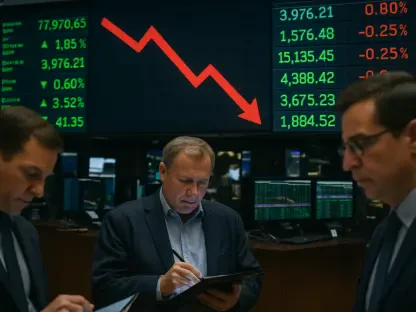What happens when a nation’s government stalls for over a month, leaving millions without vital support, and the effects ripple through every corner of society? Since October 1, hundreds of thousands of federal workers have gone unpaid, food benefits for countless families have dried up, and air travel has descended into chaos. This unprecedented shutdown, the longest in American history, has not just been a political deadlock but a profound disruption to daily life. The Senate’s recent decision to reopen the government offers a glimmer of hope, but with funding secured only until January 30, the question lingers: is this truly a resolution, or merely a pause in a larger battle?
A Country in Crisis: The Shutdown’s Deep Impact
The shutdown’s toll on ordinary Americans has been staggering. Federal employees, from park rangers to TSA agents, have faced empty bank accounts, with many turning to food banks or side gigs to survive. Families relying on SNAP benefits have struggled to put meals on the table, while airports have grappled with delays and security risks due to understaffing. This wasn’t a distant policy debate—it was a crisis felt in homes and communities across the nation, underscoring just how dependent society is on a functioning government.
Beyond individual hardship, the ripple effects touched broader systems. National parks closed, critical research projects stalled, and small businesses near federal offices saw plummeting revenue. Economists estimate the shutdown shaved billions off the GDP, a stark reminder of the cost of political inaction. The urgency to resolve this gridlock became not just a matter of governance, but of national stability.
The Core Conflict: A Battle Over Budget and Power
At the heart of this historic shutdown lies a fierce clash over fiscal policy and executive authority. Since early October, key federal agencies have operated without funding, a direct result of failed negotiations between Congress and President Donald Trump. Trump’s push to downsize the federal workforce and slash billions in spending collided with Democratic demands to protect social programs, creating an impasse that exposed deep divisions over the role and size of government.
This standoff reflects larger national debates about debt and priorities. With the federal debt standing at $38 trillion and growing by $1.8 trillion annually, Republicans argue for austerity, while Democrats emphasize the need for safety nets. The shutdown became a microcosm of these tensions, revealing how fragile America’s fiscal framework can be when consensus remains out of reach.
Inside the Agreement: A Temporary Lifeline
On November 10, the Senate passed a compromise bill with a 60-40 vote, a critical step toward reopening the government. The deal restores funding to federal agencies until January 30, ensuring that SNAP benefits remain secure for millions through September of the following year and that unpaid federal workers finally receive their wages. Nearly all Senate Republicans and eight Democrats supported the measure, signaling a rare moment of bipartisanship amid intense division.
However, this resolution is far from permanent. It delays Trump’s controversial workforce reductions but lacks protections against future spending cuts. Critical issues, such as health insurance subsidies for 24 million Americans set to expire soon, were sidelined, with only a promise of a December vote to address them. While stock markets rallied at the news, the agreement does nothing to tackle the ballooning federal debt, raising doubts about its long-term viability.
The bill now heads to the House, where Speaker Mike Johnson aims for swift passage. President Trump has already endorsed it as “very good,” suggesting his signature is imminent. Yet, with so many unresolved matters, this fix feels more like a bandage than a lasting solution, leaving many to wonder what happens when the deadline looms again.
Fractured Perspectives: Public and Political Reactions
Public sentiment on the shutdown has been sharply divided, with frustration evident across the board. A Reuters/Ipsos poll from late October found that 50% of Americans blamed Republicans for the crisis, while 43% pointed to Democrats, hinting at potential electoral consequences for the GOP. Stories of federal workers standing in food lines or parents rationing meals for their children have fueled public anger, painting a vivid picture of a government failing its people.
Politically, the divide is just as stark. Senator Dick Durbin, a leading Senate Democrat, expressed disappointment over the deal, lamenting the missed chance to secure stronger policy wins, especially after recent Democratic gains in states like New Jersey and Virginia. Meanwhile, Trump’s approval of the agreement highlights his confidence in the outcome, even as critics argue it postpones inevitable conflicts. These contrasting reactions underscore a nation and leadership still grappling with fundamental disagreements.
Charting the Path Ahead: Preparing for Uncertainty
With funding secured only until January 30, the specter of another shutdown remains real. Tracking legislative developments is crucial, particularly the upcoming House vote and the December debate on health subsidies, both of which could shape the next chapter of this saga. Staying informed about these milestones offers a way to anticipate potential disruptions and understand the broader fiscal landscape.
Community action also plays a vital role during such uncertain times. Federal workers and SNAP recipients continue to recover from weeks of hardship, and local support—whether through donations or advocacy—can make a tangible difference. Engaging with neighbors and community organizations helps address immediate needs while building resilience against future crises.
Finally, holding elected officials accountable is essential. Pushing representatives to prioritize long-term funding solutions over temporary patches ensures that essential services remain protected. With ongoing tensions over Trump’s fiscal policies and partisan priorities, proactive engagement is key to preventing another painful standoff. The nation cannot afford repeated cycles of crisis and temporary relief.
Reflecting on a Fragile Resolution
Looking back, the Senate’s vote to end this historic shutdown marked a moment of desperately needed relief after weeks of national struggle. Federal workers received their long-overdue pay, families regained access to food benefits, and air travel began to stabilize. Yet, the temporary nature of the deal—extending funding only to late January—left many issues unresolved, from health subsidies to workforce cuts.
The path forward demanded vigilance and action. Encouraging dialogue between lawmakers for sustainable fiscal policies became imperative, as did supporting communities still reeling from the shutdown’s impact. As the House prepared to vote and Trump stood ready to sign, the nation watched closely, aware that this chapter, though closed for now, was far from the end of the story.









